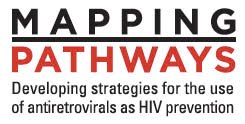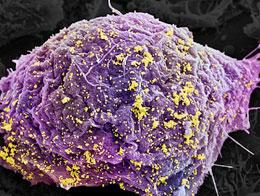“Ad campaigns that misinform communities at risk for HIV will not help end this epidemic. We call on everyone to get the facts about PrEP, seek information, and express opinions, but to do so based on real information…”
Earlier this month, a number of US newspapers ran coverage of an open letter, signed by more than 100 “openly HIV-positive gay and bisexual men from across the United States”, calling for an open discussion of the challenges and opportunities presented by pre-exposure prophylaxis (PrEP) for HIV prevention.
The letter was written partly in response to an ongoing paid ad campaign by the AIDS Healthcare Foundation (AHF) that many advocates feel “misrepresents” facts about important PrEP research. Among other things, the campaign expresses concern that PrEP could possibly lead to decreased condom use and an increased risk among gay men because it gives a “false sense of protection”. As a note supporting the open letter posted on IRMA (International Rectal Microbicide Advocates) puts it, “We reject those false assertions and want a full and factual discussion of the pros and cons of PrEP in our community...and make clear our belief that we are entitled to respect, accurate information and new HIV prevention tools.”
In response to the campaign by the AHF, the open letter states: “PrEP raises many important questions that should be discussed and debated. We are disappointed, however, that an organization that runs HIV clinics, the AIDS Healthcare Foundation (AHF), has chosen to spend tens of thousands of dollars on ads that use simplistic and often misleading arguments to condemn PrEP before the FDA and the HIV community have had a chance to fully review and debate the study data.”
The letter then goes on to urge the AHF to put a stop to its campaign: “Ad campaigns that misinform communities at risk for HIV will not help end this epidemic. We call on everyone to get the facts about PrEP, seek information, and express opinions, but to do so based on real information, not fear of the scientific process or prejudice against gay/bi men. To that end, we call on AHF to end their expensive and misleading ad campaign, and to work together with us to promote an informed public discussion of HIV prevention that can help reduce HIV risk and save lives.”
One signee who was quoted in an article published in the Sacramento Bee explained his reasons for signing the letter, “As an HIV positive gay man I signed this letter because I learned from experience we need all credible options to stop this epidemic. I owe my life to the fact that advocates and activists have pushed hard for decades to make effective AIDS drugs available to HIV-positive people," said Kali Lindsey. "Now we know that AIDS drugs can also play an important role in the health and well-being of HIV-negative gay men, how could we not move forward to reap the benefits of this research. It is not an option to ignore these findings."
[Content that is linked from other sources is for informational purposes and should not construe a Mapping Pathways position.]



























